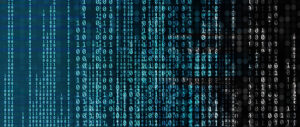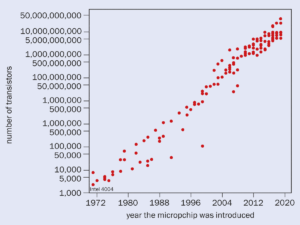Decoding the Digital Age: How Binary Code Rules Our World
Imagine a world without the vibrant glow of your smartphone screen, the instant connection to information at your fingertips, or the endless stream of entertainment accessible with a click. This seemingly dystopian reality would be our world without the invisible language that powers it all: binary code. This simple system of binary, consisting of just ones and zeros, forms the foundation of the digital age and makes up all of the information within our computers, smartphones, and the internet. Join me as we decode the secrets of binary code, revealing its influence on our digital world
Making sense of 1s and 0s
Binary code operates on a fundamental principle: the existence of two distinct states. In the early days of computing, these states were represented by physical switches – turned on (1) or turned off (0). Today, within the intricate circuits of modern devices, these states translate to electrical signals – high voltage (1) or low voltage (0). (Maxim 1) By arranging these 1s and 0s in specific sequences, we can represent every type of digital information.
Let’s return to our light switch example. When a light switch is on, it represents a 1, and when it’s off, it represents a 0. Now, imagine combining multiple switches. Just like a single switch can be on or off, each additional switch doubles the number of possibilities. With one switch, there are two possibilities (on or off). With two switches, there are four possibilities (off and off, off and on, on and off, and on and on). By combining eight switches (called a byte), we can create 256 (2 raised to the power of 8) unique combinations, enough to represent all the letters, numbers, and symbols we use in the digital world. This is how binary code, through its simple yet powerful system, forms the building blocks of our digital reality (Figure 1).
Figure 1

Decoding Binary
Source: Science Focus
Powering the Digital World
But binary goes beyond its fundamental operation. Just like complex sentences emerge from the combination of simple letters, intricate programs are built upon the foundation of binary code. Programmers utilize various coding languages, which act as translators, converting human instructions into sequences of 1s and 0s that computers can understand. (Borne 3) This layer of abstraction allows us to interact with technology without needing to directly manipulate the underlying 0s and 1s.
While the core concept of binary code is simple, its applications are vast. It forms the fundamental language of all digital devices, from the humble calculator to the most sophisticated supercomputer. Inside these devices, circuits bring binary code to life. High voltage represents 1, and low voltage represents 0 (similar to the on/off switch). Here’s where the magic happens: circuits manipulate these binary bits to perform calculations and store data.
By setting these switches on and off switches, we create a binary sequence representing a number, letter, or instruction. Tiny decision-makers called logic gates then manipulate these sequences. Based on voltage levels, they perform basic operations on the incoming 1s and 0s. By combining these gates, we create complex circuits that can calculate, store data (by turning transistors on or off), and execute instructions from programs written in higher-level languages. Understanding this fundamental principle of binary is key to navigating the ever-expanding digital world. It allows us to appreciate the intricate dance of electronic signals powering our everyday devices.
The Miniaturization Revolution
The journey of binary code is intricately linked to the evolution of computers themselves. In the beginning, massive rooms housed behemoth computers that relied on bulky vacuum tubes to represent 1s and 0s. These early machines were energy guzzlers, limited in capabilities, and far from user-friendly. (Bardeen 2) However, the invention of the transistor in 1947 marked a turning point. Transistors were significantly smaller and more efficient than vacuum tubes. This meant they could perform the same functions with far less space and energy consumption.
The key advantage of transistors wasn’t just efficiency, but also their size. This miniaturization revolution paved the way for a dramatic shift. Moore’s Law, which predicted the doubling of transistor density every two years, fueled the relentless pursuit of even smaller transistors. (Moore, 2005) As a result, billions of transistors can now fit on a single chip. This incredible miniaturization not only allowed for the development of smaller, faster, and more reliable computers, but it also enabled the creation of entirely new devices like laptops and smartphones that fit in the palm of our hands.
The surge in computing power brought about by miniaturization wasn’t just about speed. The ability to cram more transistors onto a chip meant cramming more processing power into a smaller space. (Figure 2) This miniaturization revolution fueled the digital revolution by making technology more accessible and affordable for a wider audience. It fundamentally transformed the way we live, work, and interact with the world.
Figure 2

Evolution of the Transistor
Source: Physics World
A Code for Our Times
As we navigate the digital world, from sending a text message to playing a video game, the invisible language of binary code plays a crucial role behind the scenes. This seemingly simple system, built on the foundation of 1s and 0s, has revolutionized communication, entertainment, and countless other aspects of our lives. From the colossal room-sized computers of the past to the pocket-sized powerhouses of today, the journey of binary code is a testament to human ingenuity and its relentless pursuit of miniaturization.
Understanding the core principles of binary code, even at a basic level, allows us to appreciate the intricacy of information that powers the technology we rely on. As the digital landscape continues to expand with fields like artificial intelligence, the importance of binary code will only increase. Modern technologies rely on circuits and coding languages which could never exist without binary. By demystifying this fundamental language, we gain a deeper understanding of the technology shaping our present and paving the way for an even more interconnected future.
References and Sources
Bellotti, M. (2018, June 9). The land before binary. Medium. https://medium.com/the-technical-archaeologist/the-land-before-binary-cc705d5bdd70
Moore, G. E. (2005). Cramming more components onto integrated circuits. Mountain View; Intel.
Thomas, A. (2023, April 4). What is binary?. Built In. https://builtin.com/software-engineering-perspectives/binary